Part One Interview

“The topic for the ages is the art form is illegal, but on the other hand you have youngsters who are interested in this art form, so you need to show them this is how it evolved. For me and for other artists, how it developed in New York where it all began. If you want to learn about how someone could exist in that environment, coming from someone who was there from the beginning. So you will get a pretty good idea of how things were and how it evolved and how I became who I am now.”
Read the full ilovegraffiti.de Interview with Part One, The Death Squad after the jump
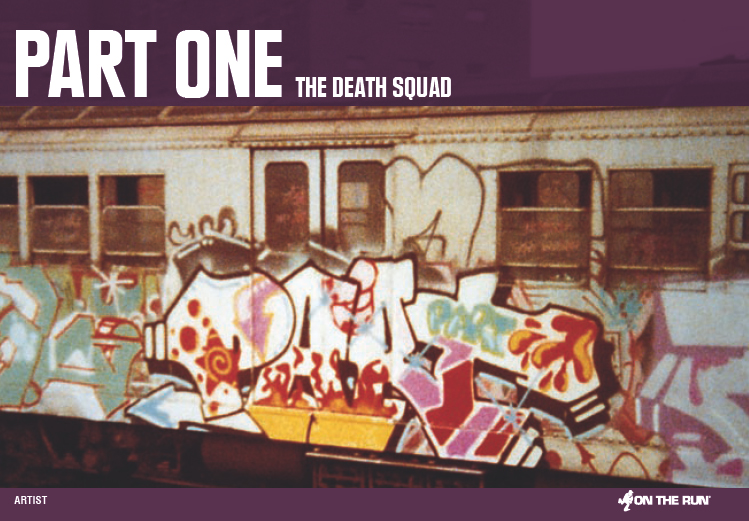
Part, please introduce yourself in a few words, what Part stands for these days and what made Part a iconic figure in the New York City Graffiti History?
My name is Enrique Torres and I go by the name Part One. I am an experienced train writer from New York City, I’ve been doing this type of art work since 1973- it’s been a long time. What Part stands for these days…just keeping the culture alive, whatever I can do to contribute to let the people know what it is really about and not their negative interpretations of it.
What makes Part Iconic in your opinion?
I think it’s mainly the period of time that has gone by and I’m still very active. I’ve had the opportunity along the way to help a lot of fellow writers with some mentoring and assistance.
We would like to learn more about you. Our knowledge about the golden era in New York is based on famous book publications, videos and graffiti magazines. We are pretty sure you have seen Style Wars, WildStyle, numerous books. Do you have the feeling all these publications represent it well or could it have been done better back in the days? How do you feel about this, do you think we got the right view on the New York Old School, tought by such books and videos?
Basically I started right after the early pioneers, I was pretty much a younger version of the pioneers I came in right after it all began, so I was caught in the middle – between the pioneers and the Subway Art generation. After me came a lot of the artists that were involved in Style Wars, WildStyle. I was towards the end of my train career at that time and was not as active as I had been in my ‘heydays’. Wildstyle and Style Wars was produced like in the eighties and it didn’t really tap into the whole scene or what had gone before it just showcased certain writers of that era, which is ok. They observed what was on hand at the time and went with that. I mean they weren’t taught. It’s like you read what is in the newspaper and that’s what you go with.
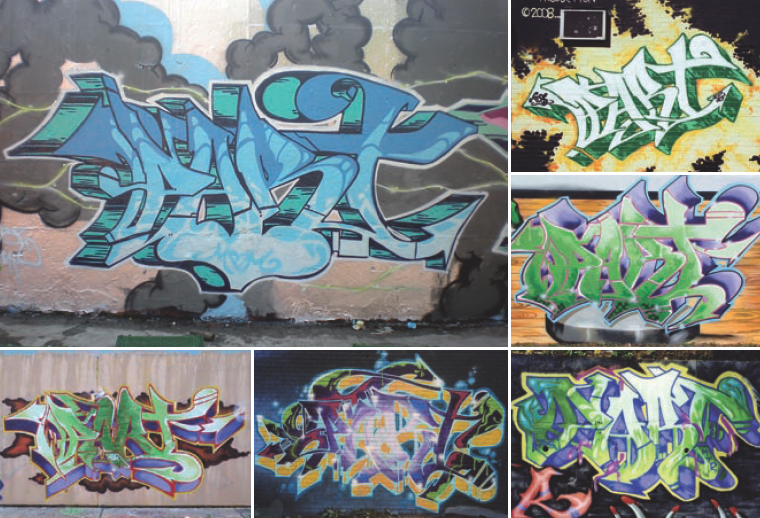
It’s like they jumped from the beginning to like the third generation. So they skipped a whole era, they excluded what happened after the pioneers had retired. It was a massive developmental stage. That’s where I came in, the people that came afterwards that were really inspired by what we had done and they acknowledge that to the fullest, but the people that documented it, they were dealing with what was there at the moment, just a glimpse. I was not included in that, but I was connected to a lot of the younger artists involved. Unfortunately there were a lot of important people that were left out. Of course it could have been done a little differently but that’s just the way it happened. Perhaps they should have done their homework, taken a history class. But they are trying to make up for it now, they understand that it was unfortunate and they reached out to a lot of people that were left out from Style Wars and Subway Art, including myself. I don’t hold it against them. What they did was good for writing. Come twenty five years later they have actually included some of left out writers not previously used in the first editions. Like in Style Wars for instance when he came out with the double DVD he included myself and some other people who were not included the first time around in the extras. I guess we just move on with it.
So remember whenever you are dealing with this art form you should delve deeper into the real history of it so you can get a better perspective of it. That’s the right way to do it. It’s like anything else you should study it a little bit, learn the history so then you really appreciate it a lot more.
How do you feel about the status of graffiti, subway art and vandalism these days?
See that’s the thing the terminology of graffiti – it was labeled that way from the inception of it but you have to understand what “graffiti” is. I don’t consider myself a graffiti artist. I’m a writer first by nature.It is unfortunate that people look at it as “graffiti” when in reality it’s more like aerosol expression. If you look up the word graffiti in the dictionary you will get a very unpleasant definition that has nothing to do with the culture. People need to understand that more.

What do you think about the status of the culture these days?
I mean you have to understand this gallery stuff has been around for a long time and show casing has been going on since the eighties. It’s like this culture has certain cycles, it will go dormant for a little while and then all of a sudden it remerges that was pretty much how the subway phenomenon, I mean there was a period where there was nothing going on and then all of a sudden new works were being produced. It has its lows, its quiet moments and it has its highs. I refer to it as cycles.
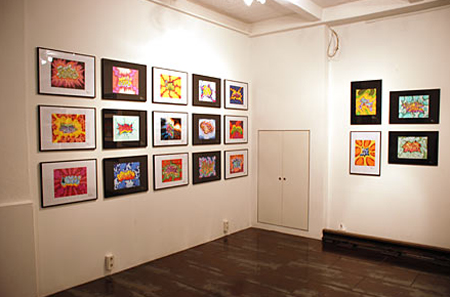
We can see Barry McGee, Ket or KR showcasing their work in galleries, art shows and fairs. Many of the oldSchool Writers from New York decide to go that way, do you think it all have a right to exist next to art, sculptures, installations or graphic design?
Absolutely, it is an art form. It had its own inception – You got to understand that this came out of people’s own creation; it was not a thing that you learned at school it was born on the streets. You would be surprised a lot of fine artists have a graffiti background. It should co-exist. But like I said it always depends upon who’s in control of it or determining the status of it… If you took a poll right now you would be surprised you will find that a lot of people think it is an art form.
If a youngster ask you why he should buy your book publication, what is the answer and arguments?
The topic for the ages is the art form is illegal, but on the other hand you have youngsters who are interested in this art form, so you need to show them this is how it evolved. For me and for other artists, how it developed in New York where it all began. If you want to learn about how someone could exist in that environment, coming from someone who was there from the beginning. So you will get a pretty good idea of how things were and how it evolved and how I became who I am now.
Tell us please in a few words how the book went to the publisher. Who helped to sort out the right photos, stories and stuff like that? It must be hard to squeeze a lifetime era of you in one little book, isnt it?
Yeah that’s true, it’s hard to squeeze it all in. Most of the images are my own, unfortunately I started documenting my work a little late. There was a lot of stuff I never got to document. There was some people who were kind enough to share some images from their collections, off the top of my head, people like Henry Chalfant, Martha Cooper, Bean 3 from New York, Revolt, Crash, Daze, Boots 119 and a few others others. There is still a lot of stuff that I didn’t get access to. I put out the word that I was looking for images for those who would be willing to share if they had anything that I didn’t have. We got a pretty good response. But still a lot of stuff just went undocumented. Ket helped in the process of that, he really did a hell of a job! and I just want to thank the people here in Berlin at From Here To Fame Publishing for being so supportive.
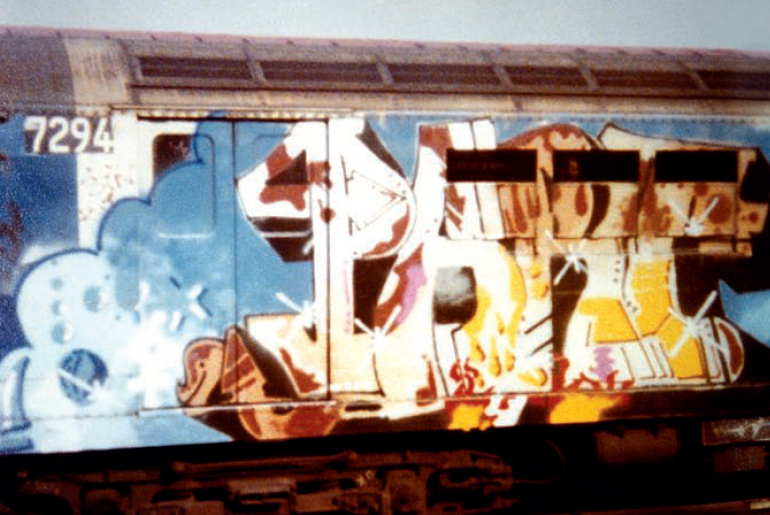
When you have recognized European graffiti the first time? Whats your thoughts on graffiti in Germany, Austria, the UK, Italy or France and did you ever feel like learning more about it? Especially the east European graffiti scene still boom and grow every year, do you follow such things or you dont care?
My first glimpse of it was in the late 80s early 90s when there were publications coming from Europe and especially here in Berlin and Paris. There were writers from New York who made their way out here as well in the mid to late 80s. Thoughts on European writers… you have some skillful writers that are producing amazing work. You also have some that are more graphically motivated, but they have some amazing paint skills. But there are a lot of writers that were really influenced by writers from New York. But it’s the same in New York – you have some writers who are influenced by others and then you have writers who try to copy someone. It’s just a testament to the art form – the nature of the game. It’s good for the culture cause it keeps the culture alive, it’s just a matter of developing the stature.
I got to hand it to the Europeans; the culture is more accessible here. Jams are a perfect example. I mean back in the States like in New York, it’s so complicated to put an event together. The government in New York is so anti towards the art form. Here in Europe it’s easier for the different countries and scenes to intermingle which helps the culture out, it creates a more paint friendly environment, which is important because it keeps the culture alive and helps the scene grow.

Do you follow what is happening over here?
I try as much as possible. I have bonded with a lot of writers from Europe and they keep me informed.
You are a member of the New York oldschool, what do you think about the death of Iz The Wiz? Must be hard to lose such a icon?
I knew Iz for quite some time, I met Iz over twenty five years ago and we’ve had the chance to paint together a couple of times. Iz was a cool cat. It was unfortunate, that he became ill like that. It made me take notice because we are around the same age, perhaps I’m a little older. He was a nice guy and his death affected a lot of us. Every time a writer passes away it is a blow to the writing community. We have lost a couple of members of our crew over the course of time. You all expect to live until you are an old person but when it happens earlier it’s hard to deal with because you don’t expect it to happen so soon in life.
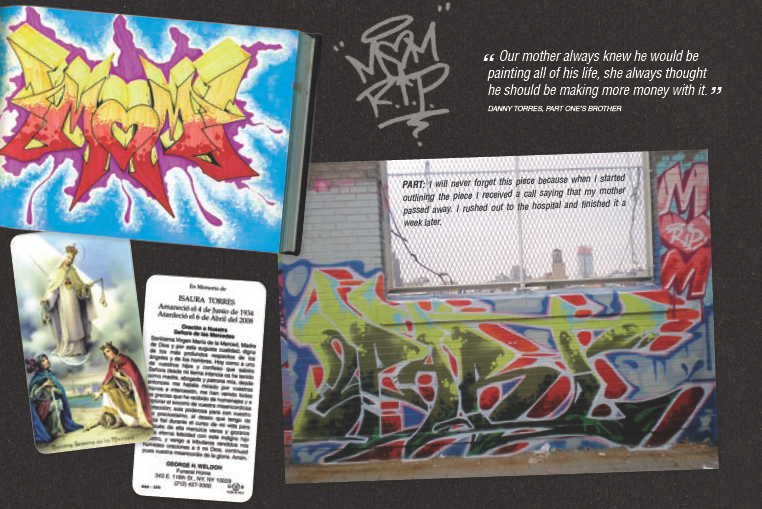
You been doing graffiti for a long time, do you have any advice to our readers about protection and graffiti life style?
You can’t just put everything in a bubble and expect it to be conserved… You can be very selective about what you get involved in, who you get involved with. You have to maintain who has access to your collection/ archive. And again be very selective of what endeavors you are involved with. As far as protecting your style – I pretty much don’t worry about who’s going to copy or what cause you pretty much know your own stuff.
Protection from the police?
You definitely have to have your paper work done. If you are doing anything on street level you need to make sure everything is in order. They are really going crazy with penalties these days; they have gone as far as hassling property owners in New York especially those who commission pieces for their home or workplace.
How does Partone make money these days?
I’m currently unemployed, believe it or not, for a year now. I’m part of the statistic that is running rampant in both America and certain parts of Europe. It’s difficult and I didn’t plan on being unemployed for this long. If it wasn’t for my talent, who knows what I would be doing now, because what you get from the government for unemployment, it’s hard for anybody to survive on that. And it’s really serious because you have people that have lost their jobs and everything and because they can’t support themselves or their families. You have people taking their lives and doing crazy stuff to support themselves. I’ve been fortunate that I’ve sold some of my artwork, it all helps. I’m by no means rich or comfortable, I’ve just managed to survive.
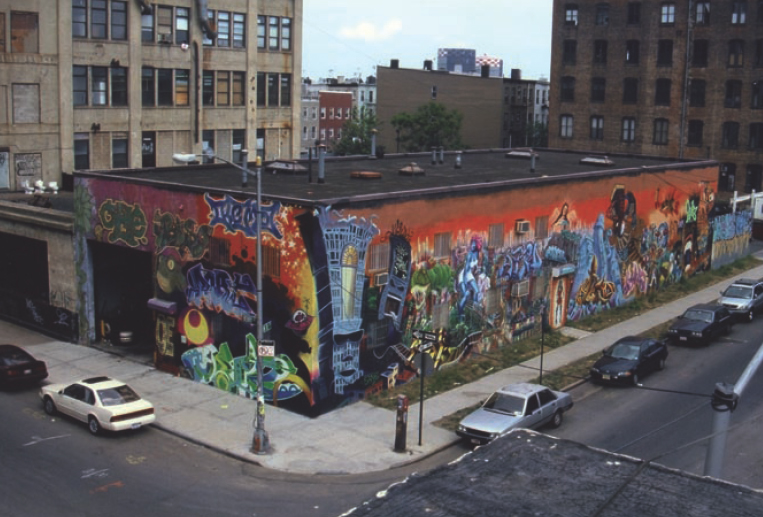
What is your plan for the future, the time after the book has been released?
Getting back home and continue to look for a decent job. Continue creating art and probably work on another book.
We appreciate the short interview and wish you all the best for the book release and the future, much respect for what you have done! Anything to add?
I just wish my mum would have still been alive to witness this, she never got the opportunity to attend a show of mine, my first solo show back in New York two years ago, because of her illness she was unable to make it. I’m sure she is watching.
About the Book
ON THE RUN BOOK #4
Part One – The Death Squad
Softcover, ISBN: 978-3-937946-58-0
Price Paperback: 9.95 €
Limited collector’s edition / Hardcover
ISBN: 978-3-937946-59-7
Price: 14.95 €
Available here: Link
Part One Europe Tour 2009
Book Signings, Black Book Sessions and Workshops
25.09. Berlin | Hip Hop Stützpunkt / Common Ground Gallery / Photos
26.09. Berlin | OVERKILL
27.09. Dublin | ALL CITY
28.09. Hengelo | RADAR
29.09. Rotterdam | X-TREME 21
01.10. Barcelona | MONTANA SHOP & Gallery
02.10. Brussels | MONTANA SHOP & Gallery
03.10. Den Haag | HAAGS HIP HOP CENTRUM
03.-04.10. Rome | CROMIAE Prenestinae
07.10. Frankfurt | CARHARTT Store
08.10. Stuttgart | THIRDRAIL.DE
09.10. Cologne | DEDICATED Store
10.10. Cologne | CARHARTT Store
Interview: notme/Part One/Amber Grünhäuser
